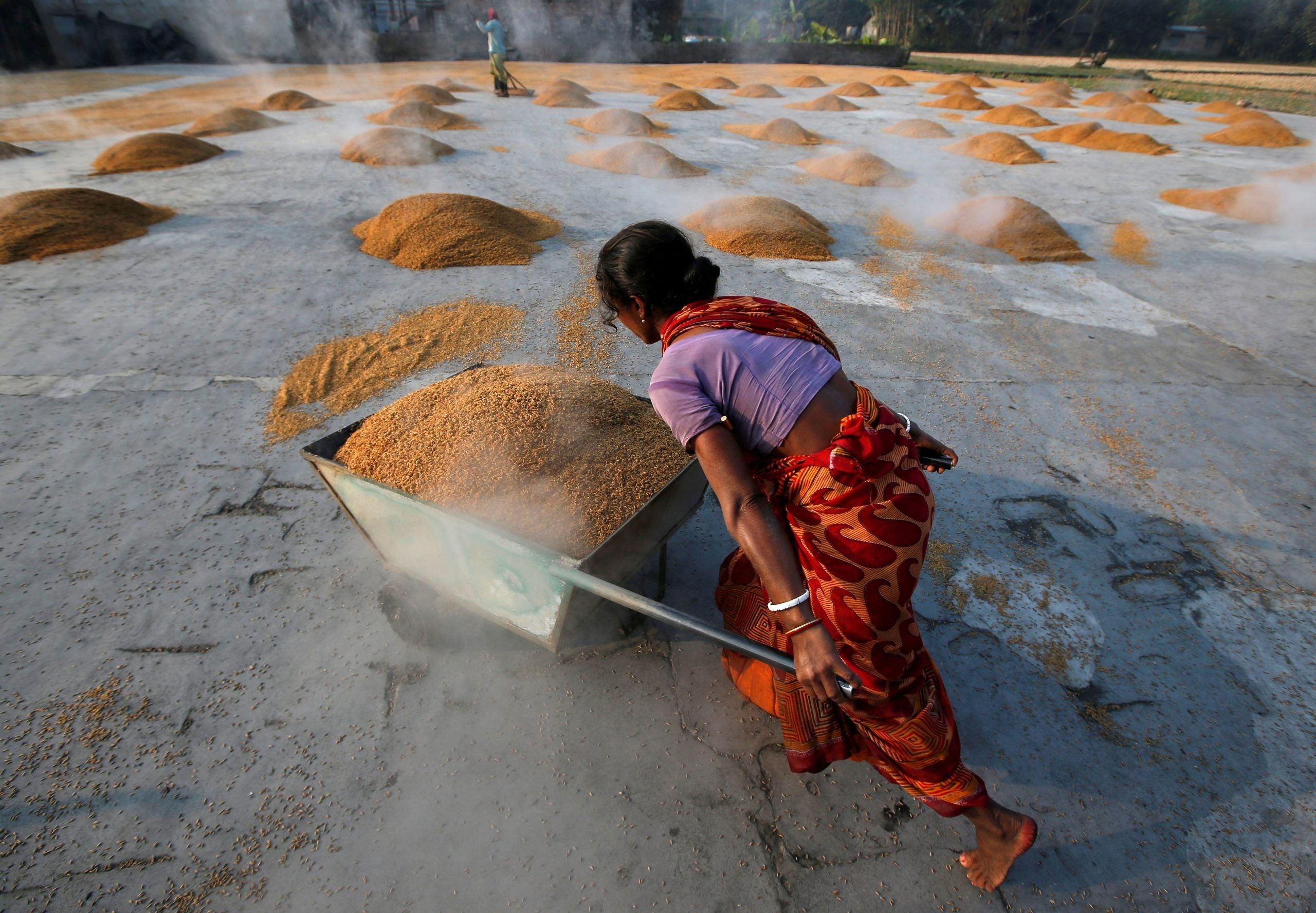Basmati rice is priced at $850 per tonne after the government reduces MEP by 30%

Basmati rice is priced at $850 per tonne after the government reduces MEP by 30%
The government recently announced a significant reduction in the Minimum Export Price (MEP) for Basmati rice. This move aims to enhance the competitiveness of Indian Basmati rice in global markets and assist Indian exporters in capturing a larger market share. Here’s a detailed overview of the decision and its implications.
The Minimum Export Price (MEP) is a mechanism used by countries to control the prices of essential commodities in international trade. By setting a floor price below which the goods cannot be sold abroad, governments can ensure that domestic prices remain stable and domestic supplies are not compromised.

The non-basmati white rice whose export was prohibited as of July 20, 2023 has been misclassified, according to trustworthy field reports obtained by the commerce ministry.
The lowest contract price for basmati exported in August was $359/tonne, while the average export price was $1,214/tonne, according to a committee formed by the Agricultural and Processed Food Products Exports Development Authority in partnership with the agriculture ministry.
The research had advocated significantly lowering the MEP since exports are constrained.
In the April through July quarter of the current fiscal, India exported 1.6 million tonne (MT) of basmati rice for $ 1.7 billion, a 13.1% rise in value over the same time the previous year. Between April and July of 2023–24, the average price of a cargo of aromatic rice was $1107 per tonne.
The nation exported 4.56 MT of basmati rice worth $4.78 billion in 2022–2023 at an average cost of $1,050 per tonne.
The average export price of basmati rice over the previous five years, according to the All India Rice Exporters Association, was $975 per tonne.

Approximately 70 areas in Punjab, Haryana, western Uttar Pradesh, Jammu & Kashmir, and Uttarakhand cultivate basmati rice with a Geographical Indication (GI) designation. Long grain, fragrant rice is in high demand on the international market. Around 75% to 80% of the world’s supply of fragrant rice comes from India.
According to authorities from the commerce ministry, the MEP for basmati rice and the export tariff on parboiled rice until mid-October imposed in July would allow the government time to evaluate the kharif rice crop for 2023–24.
Early maturing varieties of basmati rice, such Pusa 1509, have begun to enter the mandis, and exporters have warned that if MEP for basmati rice is not lowered to reasonable levels, it would affect mandi pricing and farmers’ revenue in addition to reducing exports.
India had prohibited the export of cracked rice as of September 2022. Parboiled rice now carries a 20% export charge from the government. These steps were used to reduce rice retail inflation, which had been double digits for the previous year.

Following a series of discussions with exporters, farmers, and state government representatives in the important growing states of Punjab, Haryana, and Uttar Pradesh, the government is expected to lower the minimum export price (MEP) of basmati rice from the $ 1200/tonne set in August to $ 850/tonne.
Exporters said that over 75% of India’s 4.5 million tonne (MT) yearly exports of basmati rice are exported at an average cost between $ 700 and $ 1000 per tonne.
In order to prevent the “illegal shipment of white non-basmati rice masquerading as premium basmati rice,” a temporary MEP of $1200/tonne was placed on the shipment of basmati rice in August.
In a recent announcement, the government decided to cut the MEP for Basmati rice by 30%, bringing it down to $850/tonne from its previous level. This decision is significant because Basmati rice is one of India’s prime agricultural exports, and the new pricing can potentially alter the global rice trade dynamics.

With increasing competition from other rice-exporting countries, there was a pressing need to make Indian Basmati rice more attractive in the global market. The price reduction will help Indian rice stand out in terms of cost-effectiveness.
A good harvest season led to a surplus production of Basmati rice in the country. By encouraging exports, the government aims to prevent the domestic market from getting oversaturated.
With global food demands changing due to various factors like population growth and changing dietary habits, there’s a constant need for India to adjust its export strategies. The reduced MEP might attract more buyers internationally.
The immediate effect of this move is expected to be a boost in Basmati rice exports. Indian exporters can now offer competitive prices and secure more contracts.
With a potential increase in demand, farmers might see better returns for their produce, which can lead to better economic conditions in the agrarian sector.
With surplus production finding its way to international markets, domestic prices of Basmati rice are expected to remain stable without getting impacted by oversupply.

While the reduced MEP might give an edge to Indian exporters, competitors from countries like Pakistan, which also produce Basmati rice, might react with their own pricing strategies, leading to a more intense price war.
The decision to cut the MEP for Basmati rice is a strategic move aimed at maximizing the benefits from India’s agricultural sector. While the immediate effects on exports and domestic prices will be closely watched, the long-term implications on the global rice trade, farmer welfare, and relations with competing nations will be of interest to stakeholders and observers alike.






